Trauma Informed Care
Dawn Brown
Learning Objectives
After this chapter, you should be able to:
- Comprehend how trauma gets in the way of learning by changing the brain structure of children and how information is processed.
- Implement ways to minimize sources of negative stress is vital in the classroom and may lessen the likelihood the stress response system of the child with trauma will be activated.
- Advocate for your childcare facility or school to look, feel and be different to traditional schools where these children have failed.
Trauma Informed Care
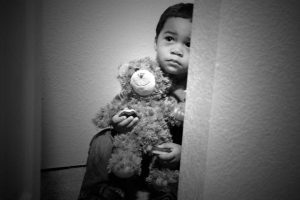
If you are reading this chapter, you are likely motivated to make a difference in the lives of children. If you have been a disciple of trauma-informed practices, you would know that loss, grief, emotional pain, and fear in childhood affect one’s life. Equally, acts of compassion and support linger in our memories, providing us hope in the darkest times. While it may seem simple and obvious to support a struggling student, the realities of such tasks highlight the challenging and complex nature of such acts. Schools respond to the complex needs of students exposed to traumatic and adverse experiences as part of an interconnected system of care. These systems of care include health care, child welfare, juvenile justice, housing, and a variety of other community services. Legislation around the world increasingly mandates interorganizational collaboration and attention has turned to considering how educators and professionals of other disciplines and services interact. As demands on educators to meet the diverse needs of students continue to grow, the challenge of providing an inclusive educational environment places a significant burden on educators. Educators are required to be informed about various learning and mental health concerns facing children in the school environment.
Such requirements necessitate interdisciplinary collaborations – both within a school and with those in other services and sectors. Attitudinal and systemic barriers have long kept educational institutions siloed from other child services, with recent policy and legislative changes enabling such interdisciplinary partnerships to occur more readily. The conversations in this book demonstrate the complex interplay between the impact of trauma on our brains and nervous systems (biology) and our thoughts and behaviors (psychology). We are learning that trauma impacts how we interact in relationships, organizational systems, and communities (sociology), how we make meaning of the world, and how we understand our purpose (philosophy). The willingness to be curious and continually learn is essential to inclusive education. Respecting and accepting another’s perspective and the consistent and critical exchange of ideas is a hallmark of productive interdisciplinary collaboration.
The prioritization of ’coming together ‘requires practitioners to actively seek opportunities to meet and collaborate with those from other disciplines. The emergence of digital technologies – through video communication software and podcasts – has enabled us to leverage the wisdom and resources of a range of practitioners worldwide in disseminating and co-creating interdisciplinary resources. Such efforts of interdisciplinary joint work with interactions between diverse community members represents increasingly sophisticated levels of interdisciplinary boundary crossing.
We hope reading this book offers you a space for reflection and learning. Ultimately, however, the book is a call to action. It is an invitation to examine the state of your schools and decide what kind of education you want for the children in your community. It is a call to re-examine what we have long assumed to be true about how education is structured and delivered. Advocacy and innovation in education mirror the efforts of the traumatized child – as educators attempt new practices and risk a state of vulnerability and uncertainty in the hope of new learning and growth. The conversations in the book highlight how thinking and acting to support the complex needs of students can instigate social change, one interaction at a time.
Considerations
- What is the child trying to communicate with me using this behavior?
- What methods will help deescalate the situation as quickly and safely as possible?
- How can I help this child to feel safe in the classroom setting by reducing triggers?
Helping Traumatized Children Learn with Dr. Dave Ziegler
Dr. Dave Ziegler

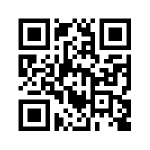 Dr. Dave Ziegler is a psychologist and founder and director of Jasper Mountain, a world-renowned healing facility for children aged three to 12. Located on more than 90 acres of beautiful forest, Jasper Mountain hosts a residential treatment facility, an integrated school, an assessment and crisis center, and a foster care program. Jasper Mountain has consistently achieved remarkable outcomes for some of the USA’s most severely traumatised children for over 30 years. Dr. Ziegler is the author of several books, including Raising children who refuse to be raised, Achieving success with impossible children, Traumatic experience in the brain, and Beyond healing: A neurological reparative therapy.
Dr. Dave Ziegler is a psychologist and founder and director of Jasper Mountain, a world-renowned healing facility for children aged three to 12. Located on more than 90 acres of beautiful forest, Jasper Mountain hosts a residential treatment facility, an integrated school, an assessment and crisis center, and a foster care program. Jasper Mountain has consistently achieved remarkable outcomes for some of the USA’s most severely traumatised children for over 30 years. Dr. Ziegler is the author of several books, including Raising children who refuse to be raised, Achieving success with impossible children, Traumatic experience in the brain, and Beyond healing: A neurological reparative therapy.
Click or scan the QR code to learn more about Dr. Ziegler’s work.
Challenges for Traumatized Children at School
Traumatized children often face significant difficulties in educational settings, where their traumatic experiences may manifest in a variety of ways that challenge traditional teaching and learning approaches. One primary challenge is the effect of trauma on cognitive functions such as memory, attention, and emotional regulation. Trauma can disrupt a child’s ability to focus on lessons, recall information, or process complex tasks. As highlighted in Ziegler’s work (2013), traumatized children may struggle to engage in structured learning due to hypervigilance, fear, or anxiety, making it difficult for them to feel safe and supported in the classroom.
Another challenge is behavioral disruptions, which are often misunderstood by educators as defiance or lack of discipline. According to Ayre and Krishnamoorthy (2020), these behaviors are often a reflection of a child’s survival instincts rather than intentional misbehavior. The need for control, difficulty trusting adults, or the inability to regulate emotions can lead to conflict with peers and teachers. Schools unprepared to address these behaviors through trauma-informed strategies may inadvertently exacerbate these issues by relying on punitive measures that further alienate the child.
Social isolation is another significant challenge for traumatized children in school environments. Often, these children have difficulty forming meaningful relationships with their peers due to a lack of trust or feelings of shame. Their social skills might be underdeveloped, causing them to be excluded or bullied. The Australian Capital Territory (ACT) Government’s transition toolkit emphasizes the importance of fostering inclusion and understanding among peers to help traumatized children feel a sense of belonging in school environments.
Moreover, traumatized children can experience school as a highly stressful place where demands for academic performance, social interactions, and adherence to rules can feel overwhelming. As noted in the Trauma Informed Education podcast (Ayre, 2016), traditional school environments can inadvertently trigger memories of past trauma, particularly in cases where children feel unsafe or unsupported by their teachers. This can lead to absenteeism or a lack of engagement, which ultimately hinders their educational progress.
Finally, traumatized children often face the challenge of managing their trauma while navigating the broader educational demands of testing, homework, and academic achievement. These children may require additional support such as modified workloads or individualized learning plans to ensure they can engage without becoming overwhelmed. Without such accommodations, they may fall behind academically, contributing to further frustration and negative self-perceptions, reinforcing a cycle of disengagement and underperformance (Ziegler, 2013).
Trauma-Informed Education
Dr. Ayre: What is your education model at Jasper Mountain, and how has it been designed to be trauma-informed?
Dr. Ziegler: You have to teach these kids differently. If you want to reach them, these are some of the factors we have found to be very helpful at Jasper Mountain.
First of all, the educational process is very active rather than passive. Many times in classroom settings, the children are given a desk, they sit at their desks, they’re told to be silent, to raise their hand, and they’re told to do their work. We do the opposite. We have a very active process where the children are physically up and about and active in the classroom. They go to learning centers throughout the room. Every half an hour or so, we stop the process, and we might put on some music, do some dancing, get very active and then stop and go back to the learning process. It’s a dynamic thing that most children are very used to doing.
We try to remove negative stress in the classroom. Too often in our schools, we have a competitive setup where we might say, “let’s see who can do the best job on this math test or spelling test”. This produces stress for all children, but sometimes for some children, it’s positive stress, which can be a significant motivator for learning. Negative stress isn’t a motivator for learning, so we try to eliminate any negative stress. Negative stress will produce a fight or flight response for kids that have trauma. We want an expressive environment where we want kids to express their opinions. We want them to draw things, to write, and to sing. The environment has to be fun. In my learning many years ago, the goal was not to make learning a fun process. I believe that not only do children learn more when they’re having fun, I think adults learn more when they’re having fun.
We also need to be very careful about the adult-mediated activity. It doesn’t take very long for a child to take a risk and try to give an answer or try to do something they’re not very good at, and if they’re made fun of, that immediately stops. We need adults to be right there, onsite, and help this to be a positive process. We don’t want children taking advantage of other children and making them feel bad.
The situation must be predictable, so we have our schedules on the board, and the kids know what’s coming next. We try to give them a five-minute warning when there’s a transition. Kids with trauma do a lot better when they can predict that here comes a change to math, or we’re going to go to lunch next, or we’re going to go out for recess.

Kids also need to have more successes than failures. Too often, when you don’t know something, you will make lots of mistakes learning. We have to build in elements that kids will be successful in some ways because none of us will continue to do something we continue to fail at. The classroom also needs to be based on relationships. It has to be between the individual and the teachers. What we do in our classrooms is we have no more than ten children. They’re all traumatised kids, but ten children in a classroom with three teachers. One of the teachers is a certified special education teacher with a master’s degree. The other two teachers are teachers’ aides, or what we call their direct care staff. There are also staff who are part of treatment teams trained in mental health.
We have both mental health and academics in the classroom simultaneously.
Now, in regards to competition. Competition can motivate kids to learn, but it can also stop the process cold. What traumatised kids need is what I call ‘even competition’. Even competition means there is a winner, and there can be a loser which can teach us about life, but every child has an equal chance of winning. The fastest child will win if we go out and have a race. If we have a test on math, the child that’s the smartest will win. You have to change that competitive process so all children have a chance of winning, or we have found they will simply not compete. We put much more emphasis on cooperation rather than competition. We want children to learn together, and we want them to teach each other. We want some of the children who are a little bit older, who may be more skilled, to help some of the younger children. One of the best ways to learn something is to teach someone else. These are some of the different approaches to education or learning that we use to really change the environment in the classroom so that it’s conducive for traumatized children to learn.
Trauma-informed education is an approach that prioritizes the emotional and psychological safety of students, particularly those who have experienced trauma. It is grounded in the understanding that trauma impacts the brain and body in ways that can affect learning, behavior, and relationships in the classroom. As noted by Ayre and Krishnamoorthy (2020), trauma-informed education shifts the focus from punitive responses to behavioral issues toward supportive interventions that recognize the underlying trauma driving these behaviors.
One core principle of trauma-informed education is creating a safe learning environment. This involves establishing predictable routines, clear communication, and a supportive atmosphere where students feel respected and understood. Ziegler (2013) emphasizes the importance of consistency and safety, which can help reduce anxiety in traumatized students and create a foundation for learning. Educators trained in trauma-informed approaches are better equipped to respond to the emotional needs of their students, fostering trust and minimizing triggers that may cause distress.
Building strong, positive relationships between students and teachers is another key element of trauma-informed education. Ayre and Krishnamoorthy (2020) argue that trust is a critical factor in helping traumatized children feel secure in the school environment. Teachers must develop empathy and patience to support students in managing their emotions and behaviors. Rather than focusing solely on academic achievement, educators in trauma-informed settings emphasize the importance of emotional regulation and resilience as integral components of student success.
Incorporating social-emotional learning (SEL) into the curriculum is also vital in trauma-informed education. SEL programs teach students essential skills for managing emotions, developing empathy, and resolving conflicts constructively. This approach aligns with the recommendations from the ACT Government’s transition toolkit, which stresses the importance of equipping traumatized children with tools to build their social and emotional resilience in school. SEL helps traumatized students navigate the complexities of school life with greater confidence and emotional control.
Lastly, trauma-informed education requires collaboration with mental health professionals and families. Schools that implement trauma-informed practices often partner with counselors, social workers, and psychologists to provide comprehensive support for students. Ayre (2016) discusses the importance of integrating mental health services within the school setting to address the holistic needs of traumatized children. This collaborative approach ensures that students receive the necessary interventions to support both their academic and emotional development. The traumatized brain does not want to be vulnerable. It does not want to be hurt again, yet you cannot learn without vulnerability. You cannot learn without making mistakes, which is a difficult challenge for kids with trauma.
 Optimum Learning Environments for Traumatised Children
Optimum Learning Environments for Traumatised Children
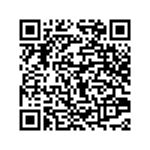 In Dr. Ziegler’s article, he writes about how trauma and learning in school do not mix well together. This is not to say that trauma does not result in significant learning for the child. The child learns not to trust, learns to be anxious around adults, and learns to be vigilant of the motivations of others. What a child learns from trauma negatively impacts learning in an academic setting. If the goal is for a child to come into an academic setting ready to learn, ready to emotionally experience the enjoyment and excitement of discovery, then the effects of traumatic experience will hinder learning in a variety of ways.
In Dr. Ziegler’s article, he writes about how trauma and learning in school do not mix well together. This is not to say that trauma does not result in significant learning for the child. The child learns not to trust, learns to be anxious around adults, and learns to be vigilant of the motivations of others. What a child learns from trauma negatively impacts learning in an academic setting. If the goal is for a child to come into an academic setting ready to learn, ready to emotionally experience the enjoyment and excitement of discovery, then the effects of traumatic experience will hinder learning in a variety of ways.
Click or scan the QR code read about read the rest of the article [PDF].
Unschooling the Educational Environment
Dr. Ayre: You write about the need to ‘unschool’ educational environments to avoid triggering memories of school failure. What do you mean by this?
Dr. Ziegler: When I say we need to unschool educational environments, we need something vastly different than a traditional school for traumatized children. Children who have experienced trauma perceive school as the place they go where they look stupid. They feel stupid, and they perceive teachers are there to point out all their mistakes and make them feel worse. That doesn’t have anything to do with what good teachers are doing in the classroom.
Unschooling the educational environment refers to creating flexible, student-centered learning experiences that move away from rigid, traditional models of education. This approach recognizes that every child learns differently and seeks to accommodate those differences by providing autonomy, creativity, and personalized learning pathways. Ziegler (2013) suggests that traumatized children, in particular, benefit from an unschooled environment, as it allows them to engage with learning in ways that feel less threatening and more aligned with their individual needs.
In an unschooled environment, learning is often self-directed, with students taking the lead in choosing what they learn and how they learn it. This model contrasts sharply with traditional schooling, where students are often expected to conform to standardized curricula and testing schedules. According to Blueprint Studios’ film Once Upon a Mountain (2021), unschooling can foster a deeper connection to learning by encouraging curiosity, exploration, and a sense of ownership over one’s education. For traumatized children, this freedom can be empowering, allowing them to re-engage with learning in ways that feel safe and supportive.
All children learn a little bit differently. We need to spend the time to find out how individual children learn and then build a fun, exciting, active process around them so that they can be successful. Our ultimate goal is to instill a genuine love of lifelong learning, and we don’t just want children to get up to their grade level or succeed in their testing. We want them to be excited about learning. There is nothing that should be easier than getting a child to get excited about learning. Yet, somehow in our educational process, we have turned off a lot of children. Learning is not as much fun, and it’s not exciting anymore.
Unschooling environments also prioritize emotional well-being alongside academic achievement. By removing the pressures of grades, standardized tests, and rigid expectations, unschooling allows children to learn at their own pace and in ways that reduce stress and anxiety. The Australian Capital Territory (ACT) Government’s transition toolkit advocates for approaches that minimize academic pressure for traumatized children, as too much pressure can exacerbate symptoms of trauma, making it harder for them to learn effectively.
Another benefit of unschooling is its focus on experiential learning. Rather than confining education to a classroom, unschooling often takes place in real-world settings where students learn through hands-on experiences. This approach can be particularly beneficial for traumatized children, as it allows them to develop practical skills and engage in learning that feels relevant and meaningful. As Ziegler (2013) points out, traumatized children often need to feel a sense of control and purpose in their learning, which unschooling provides.
However, unschooling also presents challenges, especially in ensuring that students receive a well-rounded education that meets societal expectations for literacy, numeracy, and critical thinking. For traumatized children, unschooling environments must strike a balance between autonomy and structured support to ensure that students do not fall behind academically while benefiting from the emotional and psychological safety that unschooling offers (Ziegler, 2013).
 Once Upon a Mountain: Documentary on Jasper Mountain [3:00 mins]
Once Upon a Mountain: Documentary on Jasper Mountain [3:00 mins]
To learn more about the Jasper Mountain facility and Dr. Ziegler’s work, check out the documentary, ‘Once Upon a Mountain’. Melbourne based film-makers follow Dr. Ziegler, the facility staff and youth as they engage in the educational programs at the facility.
Click or scan the QR code to watch the trailer or rent the documentary. 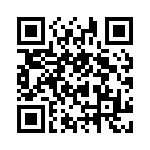
Check Your Knowledge
Adverse Childhood Experiences (ACES) or Positive Childhood Experiences (PCES) Crossword:
Fill in the blanks according to the clues and number of letters. Each word fits uniquely in the spaces provided.
- conflict, supportive caregiver, bullied, natural disaster, parent job loss, death, substance abuse, domestic violence, encouragement, safe playground, school violence, adequate diet, divorce

Challenges for Educators
Dr. Ayre: What challenges do the educators face at Jasper Mountain when working with students in a trauma-informed way?
Dr. Ziegler: We set our vision and goals pretty high. We have 80 children in our school, and every day they come in from about twenty-four different school districts from around the United States. They almost always are the most challenging child in their school district. If you have a school district of fifteen thousand children and you have the most challenging child, try to imagine that same child with 79 peers who are the most challenging child in their school. So right off the bat, there are some real challenges which is why we have a high adult-to-child ratio. This helps the teachers to be able to not only handle the behavior but also to give individualized attention to children, that’s important.
Educators face numerous challenges when working with traumatized students, particularly in environments that are not trauma-informed. One of the primary challenges is the lack of training and resources. Many teachers are not adequately prepared to recognize or respond to the signs of trauma, which can lead to misinterpretations of students’ behaviors. As noted by Ayre and Krishnamoorthy (2020), teachers often view traumatized students through a traditional disciplinary lens, which can result in punitive responses that exacerbate the child’s trauma rather than support healing.
Another challenge for educators is managing the emotional toll of working with traumatized students. Compassion fatigue and burnout are common among teachers who work with high-needs populations, as they are constantly exposed to stories of trauma and may feel helpless in the face of the complex needs of their students. The Trauma Informed Education podcast (Ayre, 2016) highlights the importance of self-care and professional support for educators to prevent burnout and ensure they can continue to provide compassionate care.
Additionally, educators often struggle with balancing the needs of traumatized students with the broader demands of the classroom. Traumatized students may require individualized attention, accommodations, or modifications to the curriculum, which can be difficult to provide in a large classroom setting with diverse needs. Ziegler (2013) notes that educators are often stretched thin, trying to meet the academic and emotional needs of all students while managing the specific challenges posed by trauma.
Building relationships with traumatized students can also be difficult for educators, especially when those students have developed mistrust of adults. Traumatized children may resist forming connections with teachers or may behave in ways that test boundaries, making it challenging for educators to create the positive, supportive relationships necessary for learning. Ayre and Krishnamoorthy (2020) stress the importance of patience and persistence in building these relationships, but doing so requires time and energy that educators may not always have.
Another challenge is to transition them back into public school settings where they may encounter the same factors that produced the failure, to begin with. How we transition them back from this very conducive environment into a much less responsive, fun, and exciting environment is all important. Fortunately, if done right, we can make that transition and have them get up to speed, return to a public school, and succeed, but only once they’re healed in our environment.
Finally, educators face the challenge of working within school systems that may not be designed to support trauma-informed practices. Many schools prioritize academic achievement and standardized testing, which can create additional stress for both students and teachers. Ziegler (2013) argues that without systemic changes that prioritize mental health and emotional well-being, educators will continue to struggle to meet the needs of traumatized students in traditional school environments.

“Image” by Gerd Altmann is in the Public Domain, CC0
Dr. Ayre: How do you bridge that gap for a traumatized child to return to Public Education successfully where the learning process looks and feels very different than it does at Jasper Mountain?
Dr. Ziegler: We build a relationship with the school and the teacher to whom the child will transition. We will meet with the school and the teacher and say we have a unique challenge for you. Teachers don’t necessarily like a problem, but they do like a challenge. Teachers are receptive when I tell them, “I will help you succeed, you can rely on my team, and if you have a problem, you can call us, and we will assist you”. Teachers can also see how this child has progressed in our setting and how things can improve. There’s nothing quite like a teacher that takes on a challenging child and succeeds. We begin by transitioning the child back into the classroom one period and one hour at a time so that they have a foot in both worlds. Jasper Mountain teachers will go to the child’s public school classroom, and we will continue to provide psychological help. We continue to be a backup during a crisis and build a team with the public school and the teacher. If we can do that and connect to them, the teachers generally say, “yes, we will do our best”. If we all work together, we can begin to help both the child and the teacher see some successes.
![]() Transition Toolkit
Transition Toolkit

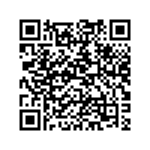 We know routines and planning are key to always supporting students. This is especially true at times of change and transition. Here we provide a range of suggestions and ideas. Some will be specifically relevant to a primary or high school transition; others will be universal and relevant to any transition point for any students. Some ideas will be dependent on your child and their learning and development.
We know routines and planning are key to always supporting students. This is especially true at times of change and transition. Here we provide a range of suggestions and ideas. Some will be specifically relevant to a primary or high school transition; others will be universal and relevant to any transition point for any students. Some ideas will be dependent on your child and their learning and development.
Click or scan the QR code to access resources to support transitions for students from the ACT Department of Education.
Dr. Ayre: When you see that success, that’s the reason you do what you do. You only need to see one little glimmer of a step through the doorway today with a smile and it makes it all worthwhile.
Dr. Ziegler: That’s why we’re all in this business of helping children. To see learning happening in front of us and a future that can make a difference to children.
Recently, I had a visit from a young man that I hadn’t seen in 18 years. Unannounced. He came to my office and said, “I just want to thank you”. He was one of the most traumatized children I have ever worked with. He said everything changed when he was here, and when he thinks of his childhood, he thinks of me and this place. He said, “You are my family, and I want you to know that I am a successful and happy adult”. That’s why we’re in this business! The importance of having fun, having success and being able to expect and predict what’s coming next are elements vital to teaching traumatized children.
Something not yet mentioned is the importance of disconfirmation. What I mean by disconfirmation is that we need to disconfirm not only the perceptions of the child about school, but their perceptions about themselves. We need to disconfirm their belief that they are not a good learner, are not successful, and are not a likeable child. Unfortunately, when we don’t disconfirm, many adults will do important things like hold kids accountable and have consequences for their behavior. Through this, we confirm the child’s negative view of themselves. We will then never turn that child into a good learner. So the process of disconfirming is crucially important.

We also don’t see enough integration between academic and psychological support. Everywhere I go, I plead with people, have your educational people and have your psychologist, and your mental health people work together for children. What we do in our setting is, in real-time, integrate our treatment and our academics in one place. We bring it to the child rather than send them to a clinic and a school and give them unintegrated bits and pieces. The adults need to be working together to help these very traumatized children.
At Jasper Mountain, we focus not only on our treatment but also on the whole child. We want to touch their mind, their body and their spirit. We do a lot of physical things, and we do a lot of things in terms of their minds and their healing, their trauma and their psychological treatment. We also address their spirit. We want children to feel a connection, the universal sense that we belong to something greater than ourselves. That could be belonging to a team, belonging to a family, or a classroom. We want our academic program to touch the mind, body and spirit. Sometimes, for children to learn, we must prepare them and get them ready to learn. You always have to start with where the child is.
Although you have a curriculum that says this is step one, two and three, we’re all going to move down this road together. But here is Susan or Charles in the classroom, not ready to learn because they are still fearful of the adults around them, of what’s happening next, or of being vulnerable. We need to start and prepare the child to learn, and sometimes that may take some time before they’re ready to take that first step academically. My experience has been that if we meet the needs of a particular child, we usually can’t hold them back from learning. Sometimes we think we need to prod and push kids into learning, yet if we only understand that if we can get on the same page and understand where the child is coming from, they’ll get excited about learning, so stand back because they’re going to take off and they’re going to learn whatever they can.
This young man that came into my office recently is a mechanic on a world-class airplane, and he has to know all the various manuals. He had to go to school for years, and this young man was standing there saying to me, “I learnt here how to learn, and now I am in a position where I make a real difference and teach others the skills I have”. You could see the pride on his face. He came to us at age four and said he was likely never to do well in school, and now this young man is an expert on one of the most sophisticated airplanes in the world. I think that’s why we have found that even after they leave our academic and treatment environment, the children grow exponentially in the first few months rather than deteriorate.
Staff Wellbeing
Dr. Ayre: Given the nature and complexity of the children you teach and the effect that can have on staff, how do you look after your team and their wellbeing?
Dr. Ziegler: We’re the only non-profit, non-government organization that I’m aware of that has a mission statement that says, “we are committed to the development of mind, body and spirit of our staff”. The first thing we know about job satisfaction is that whatever we do works, and we feel like we’re making a difference. I want you to consider, if you worked for me in one of my classrooms and you saw children coming in after having failed everywhere they had been in school, and now they’re succeeding for the first time, how would you feel going home at night?
Staff well-being is a critical component of creating a supportive educational environment, particularly for those working with traumatized students. Educators who are emotionally and physically healthy are better equipped to manage the challenges of teaching and provide compassionate care to their students. However, as Ayre (2016) notes, educators are often at risk of compassion fatigue and burnout due to the emotional demands of their work.
Self-care practices are essential for maintaining staff wellbeing. Educators need to be encouraged to prioritize their own mental and emotional health, whether through regular breaks, professional counseling, or wellness programs. The ACT Government’s transition toolkit emphasizes the importance of creating supportive staff environments where teachers feel valued and have access to resources that promote their well-being. This is particularly important in trauma-informed schools, where the emotional demands on staff are higher.
Professional development and training can also contribute to staff wellbeing by equipping educators with the tools they need to manage the challenges of teaching traumatized students. Ayre and Krishnamoorthy (2020) suggest that when teachers feel confident in their ability to handle difficult situations, they are less likely to experience stress and burnout. Trauma-informed training can help educators develop strategies for managing classroom behavior, building relationships, and providing emotional support, all of which contribute to a healthier work environment.
Collaboration and peer support are other important aspects of staff wellbeing. Educators who work together and share their experiences are better able to cope with the challenges of their work. The Trauma Informed Education podcast (Ayre, 2016) highlights the value of creating a community of educators who support each other through shared challenges and successes. Peer networks can provide emotional support, practical advice, and a sense of solidarity that helps teachers navigate the difficulties of working with traumatized students.
Lastly, leadership plays a key role in staff wellbeing. School leaders who prioritize the mental health and well-being of their staff create a culture of care that extends to both educators and students. Ziegler (2013) points out that when school administrators support their teachers by providing resources, time for self-care, and a trauma-informed school environment, educators are more likely to thrive and provide the high-quality care and education that traumatized students need.
![]() Caring for the Educator
Caring for the Educator
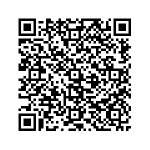 We are all, at all times, both vulnerable and resilient. Educators and educational systems have an ethical duty to build resilience and reduce vulnerability in themselves and their colleagues as secondary traumatic stress is a health and safety issue. Click or scan the QR code to learn more about self-care and wellbeing in our book Trauma informed behavior support.
We are all, at all times, both vulnerable and resilient. Educators and educational systems have an ethical duty to build resilience and reduce vulnerability in themselves and their colleagues as secondary traumatic stress is a health and safety issue. Click or scan the QR code to learn more about self-care and wellbeing in our book Trauma informed behavior support.
Chapter Summary
- Trauma gets in the way of learning by changing the brain structure of children and how information is processed.
- Minimizing sources of negative stress is vital in the classroom and may lessen the likelihood the stress response system of the child with trauma will be activated.
- Unschooling the educational environment for children with trauma is essential. School needs to look, feel and be different to traditional schools where these children have failed.
- Changing the child’s perception about school is important for the child to succeed when it comes time to transition back to a mainstream school.
- Teachers need ongoing coaching and support to learn they can teach a child with trauma successfully. It is important to have fun, success and be able to predict what’s coming next. These are vital elements for teaching traumatized children.
![]() Listen to the full interview on the Trauma Informed Education Podcast
Listen to the full interview on the Trauma Informed Education Podcast
References
ACT Government. (n.d.). Education: Transition toolkit. https://www.education.act.gov.au/support-for-our-students/students-with-disability/transition-toolkit
Ayre, K. (Host). (2016, December 3). Helping traumatized children learn with Dr. Dave Ziegler (Episode 2) [Audio podcast episode]. In Trauma Informed Education. Sound cloud. https://soundcloud.com/trauma-informed-education/tipbs-podcast-dr-dave-ziegler-part-1-of-2?in=trauma-informed-education/sets/expert-interviews&si=072698165a6d49c0a46723064c43875c&utm_source=clipboard&utm_medium=text&utm_campaign=social_sharing
Ayre, K., & Krishnamoorthy, G. (2020). Trauma informed behaviour support: A practical guide to developing resilient learners. University of Southern Queensland. https://usq.pressbooks.pub/traumainformedpractice/
Blueprint Studios. (2021, May 28). Once Upon a Mountain [Film]. Vimeo. https://vimeo.com/ondemand/ouam
Jasper Mountain Agency. (n.d.). Jasper Mountain: Hope for children & families. https://jaspermountain.org/
Ziegler, D. (2013). Optimum learning environments for traumatized children: How abused children learn best in school. http://www.jaspermountain.org/optimum_learning_environment.pdf
An interactive H5P element has been excluded from this version of the text. You can view it online here:
https://usq.pressbooks.pub/traumainformededucation/?p=342#h5p-2


